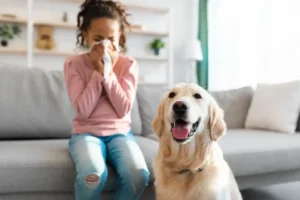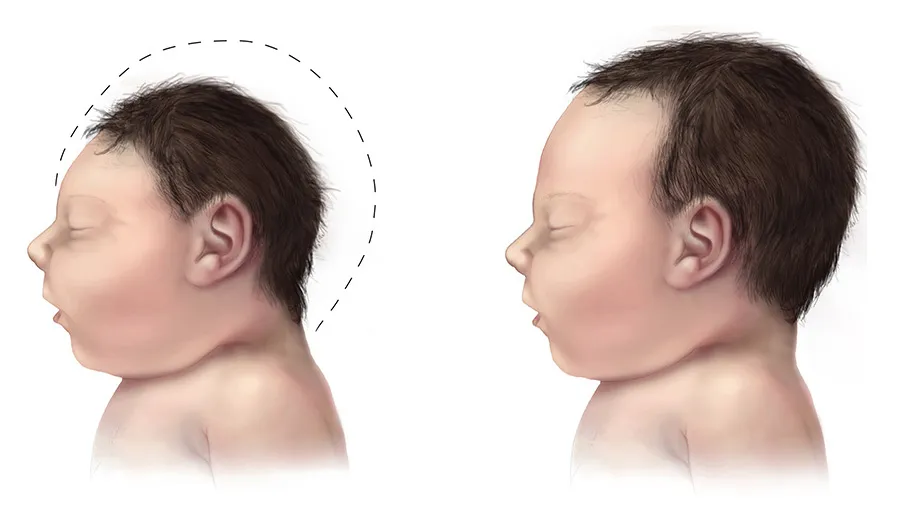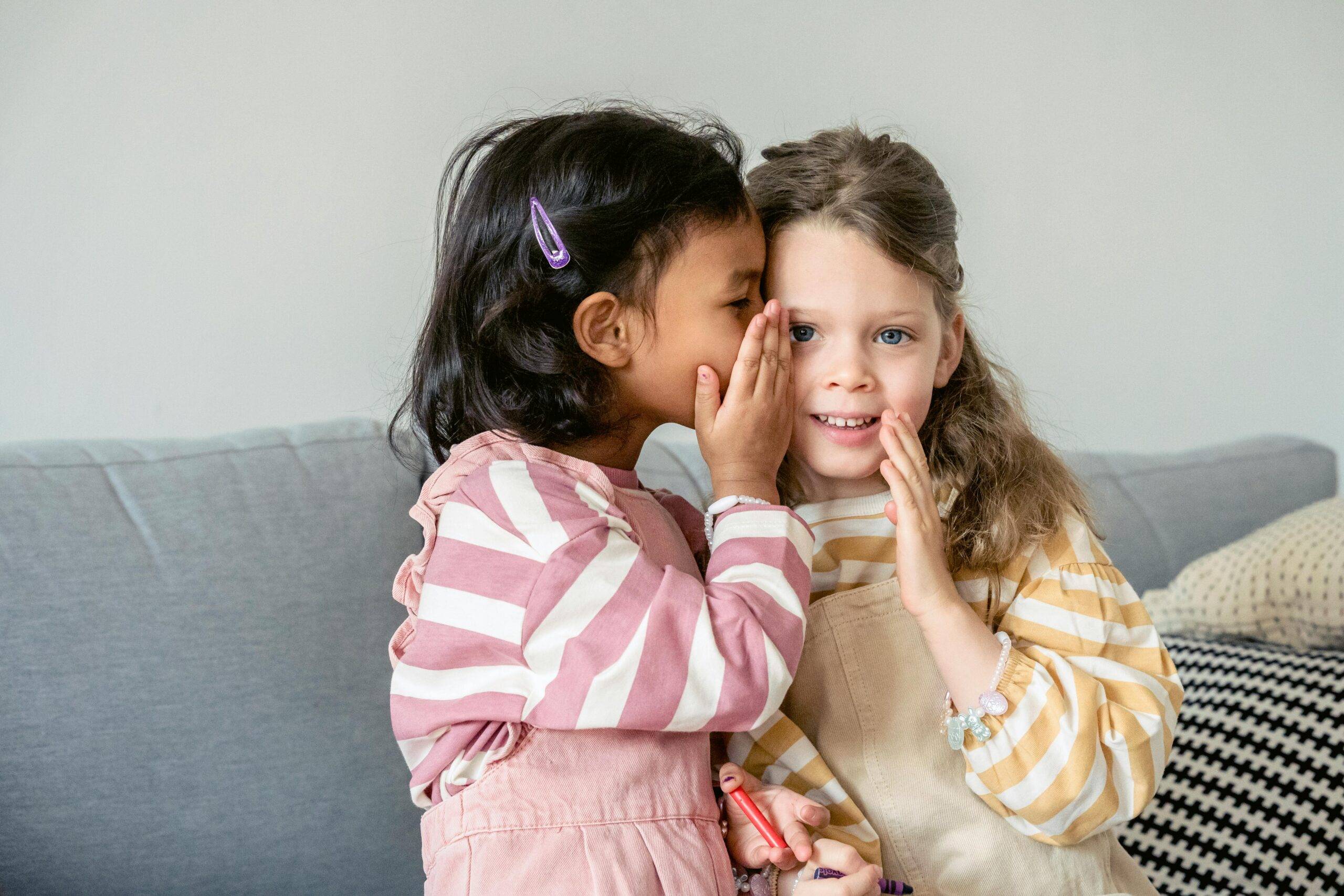Dealing with pet allergy while having a pet in your family is a common concern. However, it’s crucial to recognize that having a pet is a beautiful thing and can significantly contribute to your child’s cognitive development, empathy, and social skills, as noted by the BBC.
The positive impact of having a furry companion extends beyond emotional benefits, fostering a sense of responsibility in kids. Despite the numerous advantages, it’s essential to create a safe and healthy environment for everyone in the household, addressing concerns like pet allergies to ensure a harmonious coexistence with your beloved four-legged friend.
This notion becomes challenging if your children have an allergy to specific pets. It’s important to identify these signs so that you don’t put them at risk. It will also help you pick the right kind of pet and manage your child’s well-being when you have a pet they are allergic to.
Common Pet Allergies
It’s important to know if your child has allergies to the most popular pets, such as cats or dogs. According to the American Academy of Pediatrics, cats can be more allergenic than dogs.
Although some dog breeds are claimed to be hypoallergenic, there are no studies that support this claim. AAP data reveals that roughly 10% of the population is allergic to animals, with about 90 million people getting allergic reactions due to asthma.
If your kids are found to have allergies to cats or dogs, some easy options are fish, reptiles, some birds, and domesticated rodents. These animals have different life spans and unique needs.

Symptoms of a Pet Allergy
Although pet allergies don’t generally cause any fatal reactions, ignoring their symptoms can lead to complications that eventually become life-threatening for your child. You’ll need to know what to watch for so that you can get the right treatment or medication.
For furry pals, you can usually expect pet dander to be the leading cause of allergies. Kids will have runny or stuffy noses, frequent sneezes, and watery or itchy eyes after contact. You may also check your child’s skin, as rashes or hives indicate allergies.
Also, closely examine your child’s eyes, nose, and skin and check for respiratory symptoms. There may be spots of eczema and breathing problems. Wheezing or whistling sounds may be present and need immediate medical attention.
Supporting Your Child Through Their Pet Allergies
Having a pet in your child’s life gives great benefits. Pets give comforting companionship. On the contrary, pets can give bad experiences that may instill fear in your child. A serious consequence is that it might take years for the child to overcome the fear.
One common example of a bad experience for your child is a dog or cat bite. Kids aren’t aware of animal reactions when they feel playful with their pets. Due to this, it’s highly important for parents to instill in their children how to play safely with their pets.
As parents, you need to find ways to reach a satisfying compromise. You need to let your kids enjoy themselves with their pets without the risk of adverse health reactions. It’s important that kids play safely around animals.
A feature on children and animals by Zocdoc outlines the importance of playing safely around animals.
To prevent an allergic attack while having the joy of having pets, instill in your kids some safety habits. These may include:
- Wash hands after playing with and feeding pets.
- Don’t kiss animals or let their pets lick their faces.
- Don’t put hands in their mouths while playing with pets.
- No sharing of plates, spoons, or forks with your pet
- No sharing of food with bare hands with your pet.
- Avoid playing with pets when they’re sick.
You may also need to regularly wash and sanitize your pet’s stuff such as their toys, treats, bed, pillows, dish, and other similar items. These may be the items your kids also constantly hold or come into contact with while playing with their pets, so it’s important to keep them clean.
Moreover, your child’s confidence in pets may extend beyond your own pets. They will likely play on pets that aren’t within your control. It could be your neighbor’s pet, or pets in sidewalks and parks. These are unfamiliar animals to your child, however.
It’s quite important to teach your kids about animals they don’t know. That they should be extra cautious about transmitting germs and diseases, and the possibility of inflicting injury. All these may risk your child’s health when dealing with pets.
Lastly, involve your child’s doctor. Discuss with your pediatrician whenever you need advice on certain pet choices. You might consider virtual consultations. This will help you check your child’s allergies without associating all animal interactions with a visit to the clinic.
Telemedicine has taken quite a hit in this digital age, so it’s most likely that your pediatrician of choice will have online consultations available.


How Your Pediatrician Can Help Diagnose a Pet Allergy
Knowing if your child has a potential pet allergy doesn’t need to be a guessing game. The best and safest way is to bring them to a pediatrician to clear up any doubts that you may have.
Open communication is essential so that your child feels comfortable with their doctor. Encourage your child to be honest and express their feelings and thoughts toward the situation. In this way, the pediatrician will have better diagnostic accuracy.
Although you, as parents, will be around to provide support and explain a clearer scenario, it’s best that your child speaks directly to the doctor. Pediatricians are experts at establishing rapport with their young patients, thus building an atmosphere of trust and confidence.
You may be interested in reading more about this topic; we have this post for you, Building a Trusting Relationship with Your Child’s Pediatrician.
Pediatricians have many ways to clinically manage allergies and symptoms. At Omega Pediatrics, the first consultation need not be intimidating if the symptoms aren’t severe. The doctor will conduct allergy testing to determine the cause of the symptoms.
A physical exam will be conducted by checking your child’s skin, breathing patterns, and sweat if needed. Based on the results, the doctor will prescribe the appropriate medications. Aside from medication, allergy shots may also be recommended.

Treatment Options and Management for Pet Allergies
After a physical checkup and monitoring, your pediatrician will determine the needed medication or long-term treatment.
Saline Rinse
Your pediatrician may initially recommend saline rinses. Some kids readily respond to saline rinses, as this could be a first-aid or go-to option to combat the symptoms.
Gentle Steam
A nice, gentle steam for young children helps to loosen the mucus build-up in the nose. Adding menthol vapor makes good steam. This is a non-pharmacological option, but you may need to consult with your pediatrician first.
Allergy Medications
The prescribed medication depends on the nature of the allergy. It may include decongestants, antihistamines, nasal corticosteroids, or cromolyn sodium. Ensure that you follow the prescriptions and don’t overmedicate.
The prescribed dosage and administration of medication are dependent on the child’s age or weight. So, don’t assume the same dosage applies to any kid, even if they belong to the same age group.
Your pediatrician may prescribe allergy medications as a regimen, like continuously taking them for 7 days, or they can be taken when needed, like during an allergy attack only.
Lifestyle Adjustments
Make use of ‘Natural Ways to Defeat Allergies”
- shut windows and doors during days with a high pollen count
- Encourage kids to wash up right after long interactions with pets
- Vacuum with a HEPA filter to keep dander at a manageable level
The pediatrician will discuss whether the constant presence of a pet will be harmful to your child’s health in the long run. This will help you decide whether to keep your pet outside or in specific areas of the house.
Make a Healthy Environment for Your Kids and Their Pets
Pets make great companions as your kids grow up. Healthwise, pets are proven to provide enormous benefits, as well as social and cognitive skills. The challenging part of this companionship is ensuring a healthy and safe environment for your child.
We might not have realized that kids may have allergies due to the constant presence of cats and dogs in the house. At any time, your kid might manifest symptoms of an allergic attack. Due to this, it’s quite important to learn how to manage pet allergy symptoms.
Your child’s pediatrician plays a crucial role in the clinical management of the symptoms. Determining the cause of the allergies, the symptoms, and how to treat them through prescribed medications are some of the ways your doctor will help you.
We at Omega Pediatrics are more than happy to help you manage your child’s pet allergy symptoms. We recognize how much your kids enjoy their pets. And how much you value your pets, too. Hence, building a satisfying compromise for your child and their pet is crucial.
Beyond treating the symptoms, we at Omega Pediatrics will help you decide on pet choices in the long term. Also, we educate and counsel on some preventive ways and techniques to mitigate health risks for your child with their pets around.
After all, we strive to make your home pet-friendly. A home where your kids cherish the playful moments with their pets while making it a safe and healthy environment.



